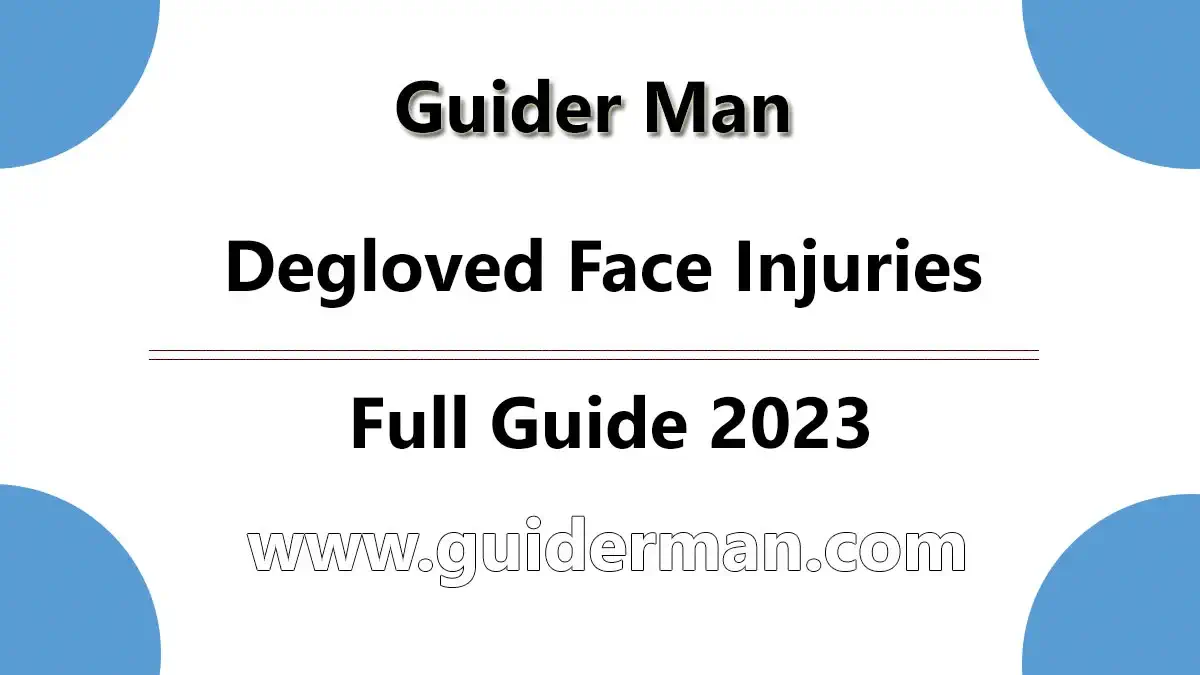Welcome to our comprehensive guide on degloved face injuries. This article will delve into the causes, symptoms, treatment options, and the road to recovery from this devastating condition. A degloved face injury occurs when the skin and soft tissues of the face are violently separated from the underlying bones and muscles. It can result in temporary discomfort, permanent deformity, numbness, and blindness. By understanding the origins of this injury and exploring available treatments, those affected can regain control of their lives and embark on a healing journey.
Causes of Degloving Injuries
Degloving injuries can be caused by various traumatic incidents, such as automobile accidents, motorbike collisions, workplace accidents, and even assaults. The sheer force generated during these events tears the facial skin and soft tissues away from the underlying structures. Notably, degloving injuries can occur during surgical procedures like facelifts and skin grafts if proper precautions are not taken.
Symptoms of a Degloved Face
The severity of a degloved face injury can vary, and the symptoms experienced will depend on the extent of the damage. Here are some of the most common signs and symptoms associated with this condition:
- Swelling and bruising: The affected area may exhibit noticeable swelling and bruising due to the trauma.
- Pain and tenderness: Pain and tenderness are common symptoms, often accompanied by discomfort in the affected area.
- Loss of sensation or numbness: Nerve damage caused by the injury can lead to a loss of sensation or numbness in the affected region.
- Discolouration of the skin: The skin in the affected area may undergo discolouration due to compromised blood flow.
- Open wounds or lacerations: In severe cases, the injury may result in open wounds or lacerations on the face.
- Difficulty breathing or seeing: Extensive damage to the facial structures can hinder breathing or impair vision.
- Also Read: Research Neighborhoods: A Comprehensive Guide
Treatment Options
The appropriate course of treatment for a degloved face injury depends on the extent and severity of the damage. Minor wounds may be managed with pain medication and regular dressing changes. However, major injuries often necessitate surgical intervention for optimal recovery. Face reconstruction surgery may involve using skin grafts or other tissue to restore the damaged area. Flap surgery may sometimes be required to reposition soft tissue and skin. The treatment approach will be tailored to the patient’s needs to ensure the best possible outcome.
Road to Recovery
Recovering from a degloved facial injury requires both physical and mental rehabilitation. The journey to full recovery can be time-consuming and emotionally taxing. Patients may experience pain, discomfort, difficulty eating, and speaking normally, which can disrupt their daily lives. Additionally, self-consciousness and embarrassment regarding their appearance can contribute to sadness and anxiety.
To facilitate a complete recovery, seeking support from medical professionals and loved ones is essential. Physical therapy plays a crucial role in restoring mobility and strength while counselling or therapy can help address the psychological effects of the injury. Connecting with others who have gone through similar experiences can alleviate feelings of isolation and provide valuable emotional support.
Potential Complications
Degloving injuries can have significant practical implications. Loss of skin and soft tissue can make basic tasks such as breathing, seeing, and feeding challenging. Damage to facial muscles and nerves may result in problems with facial expression and sensation. In severe cases, the injury can extend to the brain or spinal cord, causing permanent neurological damage.
Immediate medical assistance is crucial for anyone who has sustained a degloving injury. Delaying treatment due to uncertainty about the extent of the damage increases the risk of complications. Seeking prompt medical attention enhances the chances of successful reconstruction and reduces the likelihood of scarring.
Regular checkups following the initial treatment are vital for monitoring progress and preventing setbacks. Patients may require additional operations or treatments to address complications such as scar contracture, nerve damage, or facial asymmetry. Patients should remain patient and prioritize self-care during the healing process, which can take several months to a year or more.
In addition to physical therapy, patients recovering from a degloved facial injury may benefit from mental health treatment. Psychological effects, such as anxiety, depression, or social isolation, can arise from the trauma of the accident. Counselling, support groups, and other psychological assistance can help patients overcome these challenges and regain their sense of self.
Prevention and Safety Measures
Preventing degloving injuries is crucial, and adherence to appropriate safety measures can significantly reduce the risk of such accidents. For example, wearing protective gear on construction sites or while riding a motorbike can greatly minimize the chances of injury. Adhering to standard operating procedures and employing safe surgical practices during cosmetic or reconstructive surgeries can help prevent or mitigate degloving injuries.
Conclusion
In conclusion, a degloved face injury can have devastating psychological and physiological effects, necessitating prompt medical attention. Pain management, wound care, and surgical interventions are viable options, and aftercare services like rehabilitation and mental health counselling play a crucial role in full recovery. It is essential to prioritize safety measures to prevent such accidents. By learning about the causes, symptoms, treatment options, and road to recovery, individuals affected by degloved face injuries can take steps toward restoring their quality of life and moving forward after a traumatic event.

1 thought on “Degloved Face Injuries: Understanding, Treatment, and Recovery”